Arta, Greece on:
[Wikipedia]
[Google]
[Amazon]
Arta ( el, Άρτα) is a city in northwestern

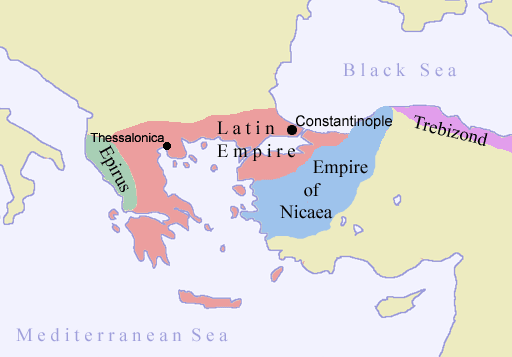 By the end of the 12th century, Arta probably formed a distinct fiscal district ('' episkepsis'') within the wider theme of Nicopolis. After the fall of
By the end of the 12th century, Arta probably formed a distinct fiscal district ('' episkepsis'') within the wider theme of Nicopolis. After the fall of 
 Aided by the
Aided by the

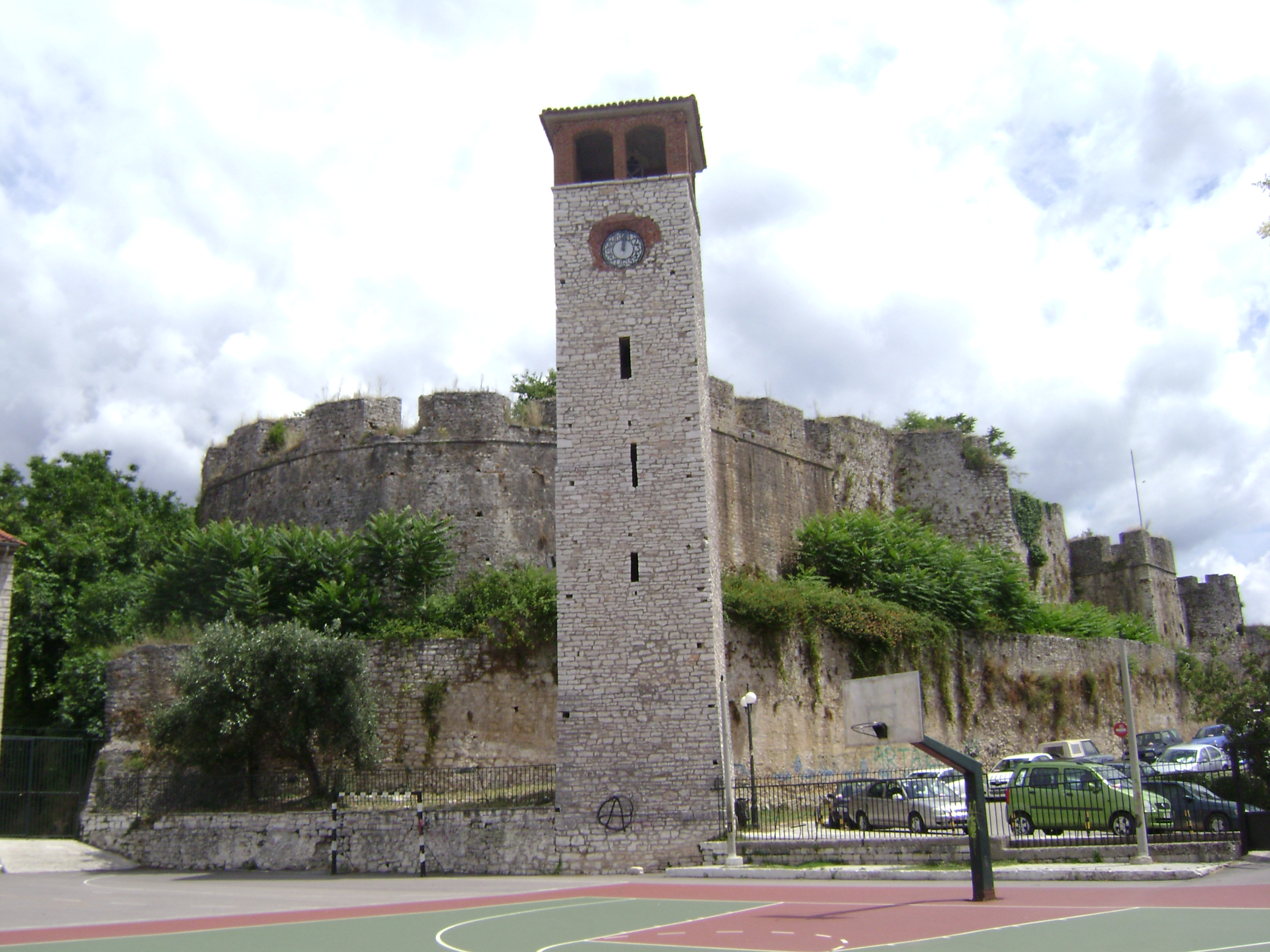


 The town's fortifications were built by Michael I Komnenos Doukas in the early 13th century, but their present form is largely post-Byzantine. Secular architecture from the Byzantine period, including the palace of the Despots of Epirus, has vanished completely, but the city preserves numerous churches.
The most important Byzantine church is the
The town's fortifications were built by Michael I Komnenos Doukas in the early 13th century, but their present form is largely post-Byzantine. Secular architecture from the Byzantine period, including the palace of the Despots of Epirus, has vanished completely, but the city preserves numerous churches.
The most important Byzantine church is the
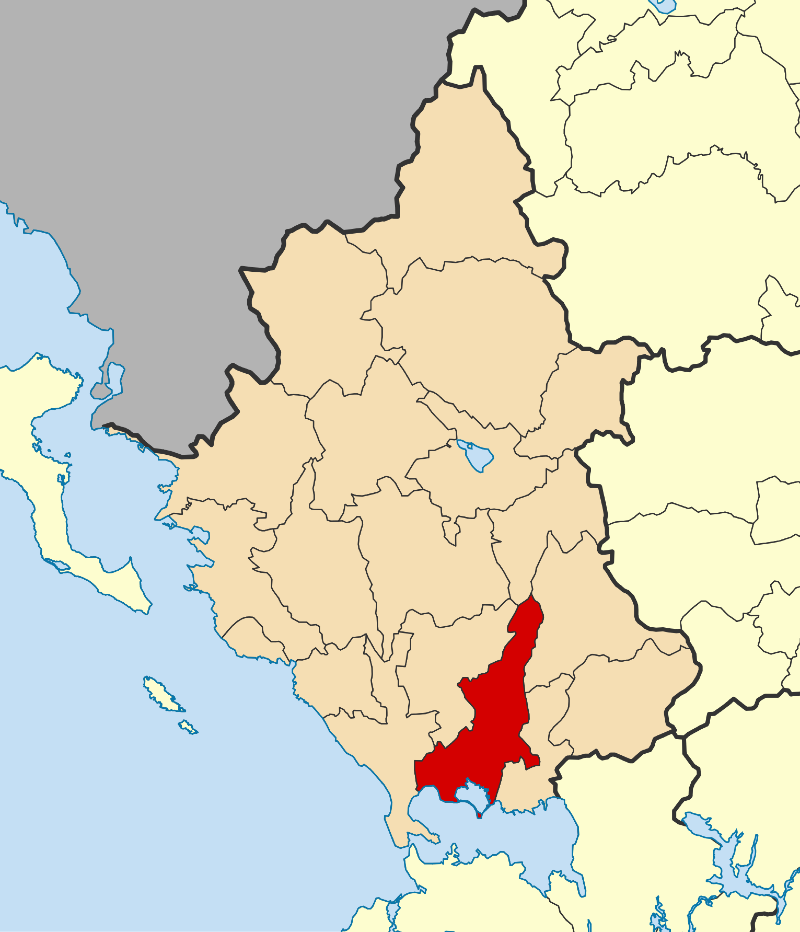

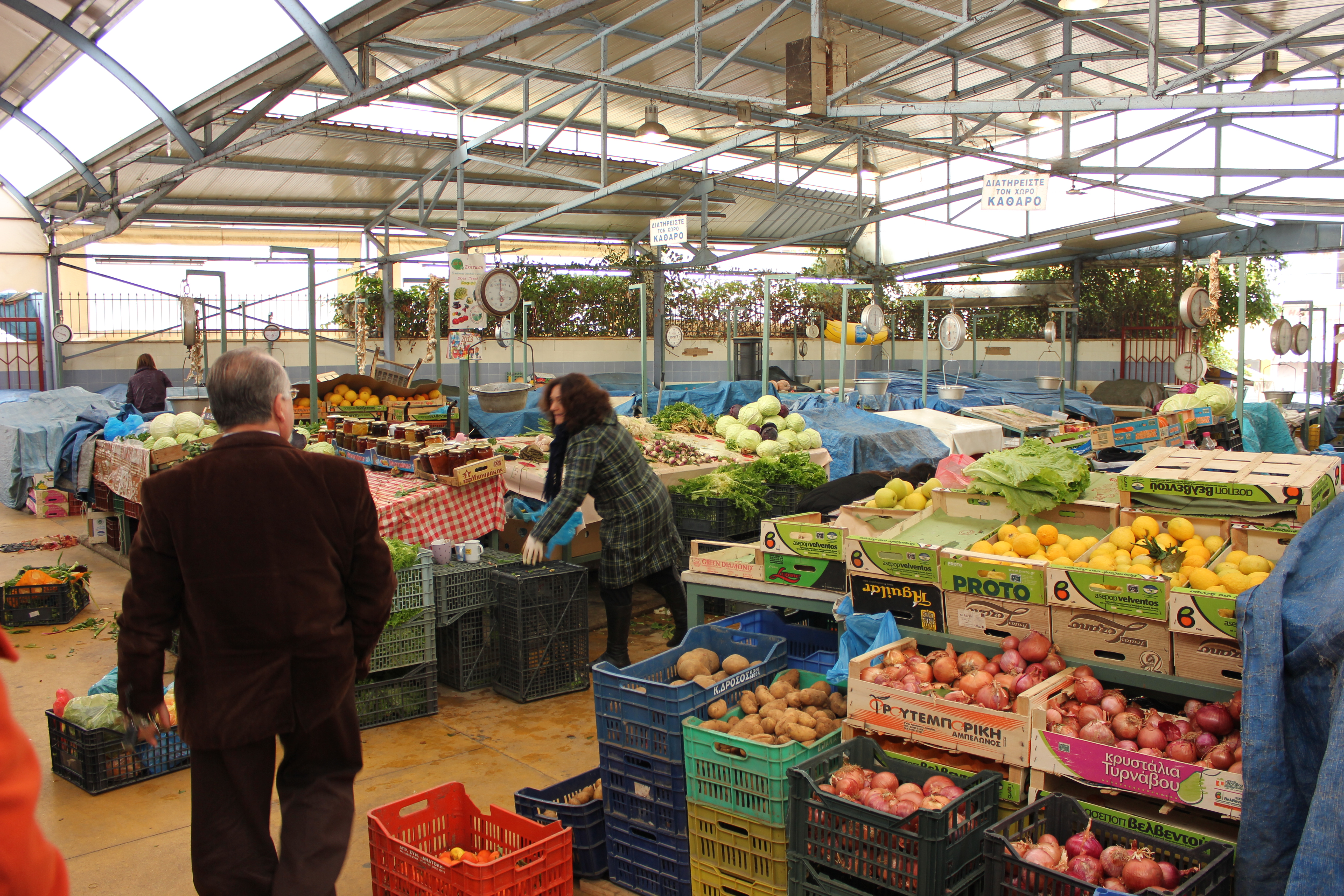 The present municipality Arta was formed at the 2011 local government reform by the merger of the following 5 former municipalities, that became municipal units (constituent communities in brackets):
* Amvrakikos (Aneza, Vigla, Gavria, Kalogeriko, Koronisia, Polydroso, Rachi, Strongyli, Psathotopi)
*Arta (Arta, Keramates, Kostakioi, Limini)
* Filothei (Agios Spyridon, Kalamia, Kalovatos, Kirkizates, Rokka, Chalkiades)
* Vlacherna (Vlacherna, Grammenitsa, Grimpovo, Korfovouni)
*
The present municipality Arta was formed at the 2011 local government reform by the merger of the following 5 former municipalities, that became municipal units (constituent communities in brackets):
* Amvrakikos (Aneza, Vigla, Gavria, Kalogeriko, Koronisia, Polydroso, Rachi, Strongyli, Psathotopi)
*Arta (Arta, Keramates, Kostakioi, Limini)
* Filothei (Agios Spyridon, Kalamia, Kalovatos, Kirkizates, Rokka, Chalkiades)
* Vlacherna (Vlacherna, Grammenitsa, Grimpovo, Korfovouni)
*
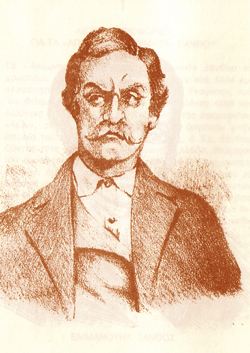 * Maximus the Greek (1475–1556), monk, publicist, writer, scholar, humanist and translator
*
* Maximus the Greek (1475–1556), monk, publicist, writer, scholar, humanist and translator
*
Arta PrefectureMunicipality of Arta on GTP Travel Pages
(in English and Greek)
Arta (community) on GTP Travel Pages
(in English and Greek)
Archaeological Museum of Arta
{{Authority control Greek prefectural capitals Municipalities of Epirus (region) Burial sites of the Komnenodoukas dynasty Populated places in Arta (regional unit)
Greece
Greece,, or , romanized: ', officially the Hellenic Republic, is a country in Southeast Europe. It is situated on the southern tip of the Balkans, and is located at the crossroads of Europe, Asia, and Africa. Greece shares land borders wi ...
, capital of the regional unit of Arta, which is part of Epirus region. The city was known in ancient times as Ambracia ( grc, Ἀμβρακία). Arta is known for the medieval bridge over the Arachthos River. Arta is also known for its ancient sites from the era of Pyrrhus of Epirus and its well-preserved 13th-century castle. Arta's Byzantine
The Byzantine Empire, also referred to as the Eastern Roman Empire or Byzantium, was the continuation of the Roman Empire primarily in its eastern provinces during Late Antiquity and the Middle Ages, when its capital city was Constantinopl ...
history is reflected in its many Byzantine
The Byzantine Empire, also referred to as the Eastern Roman Empire or Byzantium, was the continuation of the Roman Empire primarily in its eastern provinces during Late Antiquity and the Middle Ages, when its capital city was Constantinopl ...
churches; perhaps the best known is the Panagia Paregoretissa (Mother of God the Consoling), built about 1290 by Despot Nikephoros I Komnenos Doukas.
Etymology
The origin of the city's name is quite uncertain. It's either derived from a corruption of the riverArachthos
Arachthos ( el, Άραχθος) is a former municipality in the Arta regional unit, Epirus, Greece. Since the 2011 local government reform it is part of the municipality Nikolaos Skoufas
Nikolaos Skoufas ( el, Νικόλαος Σκουφάς; 17 ...
, either from the Latin
Latin (, or , ) is a classical language belonging to the Italic languages, Italic branch of the Indo-European languages. Latin was originally a dialect spoken in the lower Tiber area (then known as Latium) around present-day Rome, but through ...
word "artus" (narrow) either from the Slavic word "balta" (swamp).
History
Antiquity
The first settlement in the area of the modern city dates to the 9th century B.C. Ambracia was founded as aCorinth
Corinth ( ; el, Κόρινθος, Kórinthos, ) is the successor to an ancient city, and is a former municipality in Corinthia, Peloponnese, which is located in south-central Greece. Since the 2011 local government reform, it has been part ...
ian colony
In modern parlance, a colony is a territory subject to a form of foreign rule. Though dominated by the foreign colonizers, colonies remain separate from the administration of the original country of the colonizers, the '' metropolitan state' ...
in the 7th century B.C. In 294 BC, after forty-three years of semi-autonomy under Macedon
Macedonia (; grc-gre, Μακεδονία), also called Macedon (), was an ancient kingdom on the periphery of Archaic and Classical Greece, and later the dominant state of Hellenistic Greece. The kingdom was founded and initially ruled ...
ian suzerainty, Ambracia was given to Pyrrhus, king of the Molossians and of Epirus, who made it his capital, using Ambracia as a base to attack the Romans. Pyrrhus managed to achieve great but costly victories against the Romans, hence the phrase " Pyrrhic victory" which refers in particular to an exchange at the Battle of Asculum
The Battle of Asculum took place in 279 BC between the Roman Republic under the command of the consuls Publius Decius Mus and Publius Sulpicius Saverrio, and the forces of King Pyrrhus of Epirus. The battle took place during the Pyrrhic War, a ...
. Nevertheless, Pyrrhus found the time and means to adorn his capital with a palace, temples and theatres. In 146 BC, Ambracia became part of the Roman Republic
The Roman Republic ( la, Res publica Romana ) was a form of government of Rome and the era of the classical Roman civilization when it was run through public representation of the Roman people. Beginning with the overthrow of the Roman Ki ...
.
Middle Ages
Despite the existence of several churches from the 9th and 10th centuries, Arta is first attested only in 1082, when theNormans
The Normans ( Norman: ''Normaunds''; french: Normands; la, Nortmanni/Normanni) were a population arising in the medieval Duchy of Normandy from the intermingling between Norse Viking settlers and indigenous West Franks and Gallo-Romans. ...
under Bohemond laid siege to the city. The origin and etymology of the name is uncertain and debated. In the Komnenian period, the city flourished as a commercial centre, with links to Venice
Venice ( ; it, Venezia ; vec, Venesia or ) is a city in northeastern Italy and the capital of the Veneto Regions of Italy, region. It is built on a group of 118 small islands that are separated by canals and linked by over 400 ...
, and rose to become a bishopric by 1157. The Jewish traveller Benjamin of Tudela
Benjamin of Tudela ( he, בִּנְיָמִין מִטּוּדֶלָה, ; ar, بنيامين التطيلي ''Binyamin al-Tutayli''; Tudela, Kingdom of Navarre, 1130 Castile, 1173) was a medieval Jewish traveler who visited Europe, Asia, an ...
visited the area in 1165.

 By the end of the 12th century, Arta probably formed a distinct fiscal district ('' episkepsis'') within the wider theme of Nicopolis. After the fall of
By the end of the 12th century, Arta probably formed a distinct fiscal district ('' episkepsis'') within the wider theme of Nicopolis. After the fall of Constantinople
la, Constantinopolis ota, قسطنطينيه
, alternate_name = Byzantion (earlier Greek name), Nova Roma ("New Rome"), Miklagard/Miklagarth (Old Norse), Tsargrad ( Slavic), Qustantiniya (Arabic), Basileuousa ("Queen of Cities"), Megalopolis (" ...
to the Fourth Crusade, it is recorded as the ''pertinentia de Arta'' in the '' Partitio Romaniae'' treaty of 1204, and assigned to Venice.
The Venetians did not take control, however, for in 1205 Michael I Komnenos Doukas came to the city, succeeded its previous Byzantine governor, and quickly established a new principality, which is known by historians as the Despotate of Epirus. Arta remained the capital of the new principality for most of its history, and flourished as a result. The city experienced considerable building activity, with the renovation of older churches and the construction of new ones, most notably the Church of the Parigoritissa
The Church of the Parigoritissa or Paregoretissa ( el, Παναγία ἠ Παρηγορήτισσα, , Panagia of Consolation) is the 13th-century Byzantine metropolitan church of the Greek city of Arta. Part of the building used to house the ...
and the Church of the Kato Panagia. Sometime after 1227 it received fortifications, and was the site of regional Church councils in 1213, 1219, and 1225. The 15th-century '' Chronicle of the Tocco'' describes it as "the center of a fertile agricultural region with many water buffaloes, cows, and horses". The city had trade links to Venice—a Venetian consul is attested in 1284 and 1314/19—and Ragusa, exporting dried meat, lard, ham, furs, and indigo
Indigo is a deep color close to the color wheel blue (a primary color in the RGB color space), as well as to some variants of ultramarine, based on the ancient dye of the same name. The word "indigo" comes from the Latin word ''indicum'', ...
. Archaeological finds also attest to a local ceramic industry.
After the Battle of Pelagonia
The Battle of Pelagonia or Battle of Kastoriae.g. ; . took place in early summer or autumn 1259, between the Empire of Nicaea and an anti-Nicaean alliance comprising Despotate of Epirus, Sicily and the Principality of Achaea. It was a decisive ev ...
in 1259, the city was occupied by the troops of the rival Greek successor state, the Empire of Nicaea, (which restored the Byzantine Empire in 1261) but was soon recovered for Epirus by John I Doukas. Another attack by the Byzantine emperor Andronikos II Palaiologos in 1292, by land and sea, was unsuccessful. In 1303, the city was besieged for a month by the Angevins under Charles II of Naples. In 1313, much of the city was destroyed in a great fire. In the next year, Byzantine troops under the '' pinkernes'' John attacked Epirus, including Arta.
In 1318, the last male-line descendant of Michael I, Thomas I Komnenos Doukas
Thomas I Komnenos Doukas ( Latinized as Comnenus Ducas) ( el, Θωμάς Α΄ Κομνηνός Δούκας, translit=Thōmas I Komnēnos Doukas) (c. 1285–1318) ruler of Epirus from c. 1297 until his death in 1318.
Thomas was the son of N ...
, was assassinated by his nephew, the Count of Cephalonia
The County Palatine of Cephalonia and Zakynthos existed from 1185 to 1479 as part of the Kingdom of Sicily. The title and the right to rule the Ionian islands of Cephalonia and Zakynthos was originally given to Margaritus of Brindisi for his serv ...
Nicholas Orsini
Nicholas Orsini ( gr, Νικόλαος Ορσίνι, ''Nikolaos Orsini'') was count palatine of Cephalonia from 1317 to 1323 and ruler of Epirus from 1318 to 1323.
Nicholas was the son of Count John I Orsini of Cephalonia by Maria, a daughter ...
, and Epirus passed to the Italian Orsini family. Nicholas was in turn murdered in 1323 by his brother John II Orsini. In 1331 Arta, as well as Leucas
''Leucas'' is a genus of plants in the family Lamiaceae, first described by Robert Brown in 1810. It contains over 200 species, widespread over much of Africa, and southern and eastern Asia (Iran, India, China, Japan, Indonesia, etc.) with a f ...
and other areas, were occupied by Walter VI of Brienne
Walter VI of Brienne (c. 1304 – 19 September 1356) was a French nobleman and crusader. He was the count of Brienne in France, the count of Conversano and Lecce in southern Italy and claimant to the Duchy of Athens in Frankish Greece.
Lif ...
, and John Orsini was forced to accept Angevin suzerainty. John's death in 1335 left Epirus in the weak hands of the young Nikephoros II Orsini and his mother Anna Palaiologina, and the Byzantine emperor Andronikos III Palaiologos availed himself of the opportunity to occupy and annex Epirus.
Byzantine rule was unpopular, and in 1339 a revolt broke out, with Arta joining it, under a certain Nicholas Basilitzes. Andronikos III and his commander-in-chief, John Kantakouzenos, campaigned in person in Epirus and captured the rebel fortresses one by one, either by siege or through negotiations. By the end of 1340, Byzantine rule was restored, and John Angelos took his seat as imperial governor in Arta.

 Aided by the
Aided by the Byzantine civil war of 1341–1347
The Byzantine civil war of 1341–1347, sometimes referred to as the Second Palaiologan Civil War, was a conflict that broke out in the Byzantine Empire after the death of Andronikos III Palaiologos over the guardianship of his nine-year-old son ...
and an outbreak of the Black Death that devastated the region, Arta with the rest of Epirus fell under the rule of the Serbian
Serbian may refer to:
* someone or something related to Serbia, a country in Southeastern Europe
* someone or something related to the Serbs, a South Slavic people
* Serbian language
* Serbian names
See also
*
*
* Old Serbian (disambiguation ...
king Stefan Dushan in autumn 1347. Dushan's half-brother Simeon Uroš, who married John II Orsini's daughter Thomais Orsini, was appointed governor of Epirus. The city remained part of the new Serbian Empire until Dushan's death in 1355. Nikephoros II Orsini recovered Epirus in 1356/7, but his death in the Battle of Achelous against the Albanian tribes that had invaded the region, meant that Arta returned to the (rather nominal) rule of Simeon Uroš, who preferred to reside in Thessaly
Thessaly ( el, Θεσσαλία, translit=Thessalía, ; ancient Thessalian: , ) is a traditional geographic and modern administrative region of Greece, comprising most of the ancient region of the same name. Before the Greek Dark Ages, Thes ...
rather than Epirus. This left Epirus open to increasing Albanian migration, who soon captured most of Epirus, except for Ioannina. In 1367 or shortly after, Arta too was captured, and became the centre of the " Despotate of Arta", until 1374 under Peter Losha
Pjetër Losha was an Albanian clan leader in medieval Epirus
sq, Epiri rup, Epiru
, native_name_lang =
, settlement_type = Historical region
, image_map = Epirus antiquus tabula.jpg
, map_alt = ...
and then John Bua Spata
Gjin Bua Shpata (sometimes anglicized as ''John Spata'') ( 1358 – 29 October 1399) was an Albanian ruler in Western Greece with the title of Despot. Together with Peter Losha, he led raids into Epirus, Acarnania and Aetolia in 1358. He was r ...
. The Albanian rulers managed to withstand attacks by the Angevins (sometime between 1374 and 1384), as well as by the Grand Master of the Knights Hospitaller Juan Fernández de Heredia in 1378, but in 1384 the city was plundered by the Ottoman Turks.
From 1401/02, Carlo I Tocco, the ambitious Count of Cephalonia, began launching attacks on Arta, taking advantage of the Albanians' infighting. Despite the Albanians' calling on Ottoman aid, in 1416 Tocco captured Arta after a long siege. Having taken control of Ioannina in 1411, Tocco thus reunited the core of the old Epirote realm, and received recognition from both the Ottomans and the Byzantine emperor. After Carlo I's death in 1429, he was succeeded by his nephew Carlo II Tocco
Carlo II Tocco (died 1448) was the ruler of Epirus from 1429 until his death.
Life
Carlo II was the son of Leonardo II Tocco, the younger brother and co-ruler of Carlo I Tocco, count of Cephalonia and Zante, duke of Leukas, and ruler of Epirus. ...
. In 1449, the city fell to the Ottomans.
Ottoman period
Under Ottoman rule, the town was called in Turkish ''Narda''. It was occupied by Venetians in 1717 and the French in 1797, but the Ottomans retook it in 1799. Several battles took place near the city during the Greek War of Independence. In 1776, the town was composed of approximately 8,000 to 10,000Greeks
The Greeks or Hellenes (; el, Έλληνες, ''Éllines'' ) are an ethnic group and nation indigenous to the Eastern Mediterranean and the Black Sea regions, namely Greece, Cyprus, Albania, Italy, Turkey, Egypt, and, to a lesser extent, ot ...
, 200 Turks and 200 Jews
Jews ( he, יְהוּדִים, , ) or Jewish people are an ethnoreligious group and nation originating from the Israelites Israelite origins and kingdom: "The first act in the long drama of Jewish history is the age of the Israelites""The ...
. At the time, Arta specialized in producing products such as wheat, wine, tobacco and shipbuilding timber.
Modern era
The city was finally annexed to the Greek Kingdom in 1881 with theConvention of Constantinople
The Convention of Constantinople is a treaty concerning the use of the Suez Canal in Egypt. It was signed on 29 October 1888 by the United Kingdom, Germany, Austria-Hungary, Spain, France, Italy, the Netherlands, the Russian Empire, and the O ...
.
In March 1944, most of the Jewish community (384 members at the time) was arrested by the Nazis and deported to the extermination camp
Nazi Germany used six extermination camps (german: Vernichtungslager), also called death camps (), or killing centers (), in Central Europe during World War II to systematically murder over 2.7 million peoplemostly Jewsin the Holocaust. The v ...
s.
Climate
Landmarks
Classical
The modern city is on the site of ancient Ambracia. Remains of the classic era include the ancient walls, the ruins of an ancient temple ofApollo
Apollo, grc, Ἀπόλλωνος, Apóllōnos, label=genitive , ; , grc-dor, Ἀπέλλων, Apéllōn, ; grc, Ἀπείλων, Apeílōn, label=Arcadocypriot Greek, ; grc-aeo, Ἄπλουν, Áploun, la, Apollō, la, Apollinis, label= ...
, a small theatre, and remnants of the southwest cemetery.
Byzantine and later



cathedral
A cathedral is a church that contains the ''cathedra'' () of a bishop, thus serving as the central church of a diocese, conference, or episcopate. Churches with the function of "cathedral" are usually specific to those Christian denominations ...
Church of the Paregoretissa, built ca. 1290 by Nikephoros I Komnenos Doukas and his wife Anna Palaiologina Kantakouzene. Other important churches of the late Byzantine period are the Church of the Kato Panagia, built by Nikephoros I's father Michael II Komnenos Doukas
Michael II Komnenos Doukas, Latinized as Comnenus Ducas ( el, Μιχαήλ Β΄ Κομνηνός Δούκας, ''Mikhaēl II Komnēnos Doukas''), often called Michael Angelos in narrative sources, was from 1230 until his death in 1266/68 the rule ...
, and the Monastery of Saint Theodora, housing the tomb of the city's patron, Theodora of Arta
Theodora Petraliphaina ( el, Θεοδώρα Πετραλίφαινα), canonized as Saint Theodora of Arta ( el, Αγία Θεοδώρα της Άρτας; ca. 1225 – after 1270), was a consort of Epirus and an Orthodox Christian saint.
Li ...
. Several other churches dating to the 9th and 10th centuries also survive in and around the city: Saint Basil of the Bridge, Saint Demetrios of Katsoures in Plisioi, the Panagia Blacherna monastery, the Panagia Vryoni in Neochoraki, the Red Church in Vourgareli
Vourgareli ( el, Βουργαρέλι) is a Greek village in Arta prefecture. It is located in the north-east of Arta prefecture, built at a height of 900 meters in the slope of Tzoumerka Mountains. The village is the seat of Central Tzoumerka muni ...
, the Panagia of Koronisia in Koronisia and the Church of the Pantanassa in Filippiada.
Museums
* Archaeological Museum of Arta * Church of the Paregoretissa *Folk museum 'Skoufas' *Historical museum 'Skoufas' *Private folk museum in Kypseli. *Archaeological museum of KoronisiaEducation
Arta has several university departments belongs to the university of Ioannina.Transportation
Arta is located NNW of Antirrio,Messolongi
Missolonghi or Messolonghi ( el, Μεσολόγγι, ) is a municipality of 34,416 people (according to the 2011 census) in western Greece. The town is the capital of Aetolia-Acarnania regional unit, and the seat of the municipality of Iera Polis ...
and Agrinio, NE of Preveza, SSE of Ioannina and nearly SW of Trikala.
Regular bus lines connect Arta with all bigger Greek cities.
(bus to Athens departs several times a day and trip takes about 5 hours)
The city is linked with the GR-5 (Antirrio - Ioannina) and the GR-30 which links with Peta and Trikala.
The Arachthos River flows to the west with its reservoir lying directly to the north.
Municipality


 The present municipality Arta was formed at the 2011 local government reform by the merger of the following 5 former municipalities, that became municipal units (constituent communities in brackets):
* Amvrakikos (Aneza, Vigla, Gavria, Kalogeriko, Koronisia, Polydroso, Rachi, Strongyli, Psathotopi)
*Arta (Arta, Keramates, Kostakioi, Limini)
* Filothei (Agios Spyridon, Kalamia, Kalovatos, Kirkizates, Rokka, Chalkiades)
* Vlacherna (Vlacherna, Grammenitsa, Grimpovo, Korfovouni)
*
The present municipality Arta was formed at the 2011 local government reform by the merger of the following 5 former municipalities, that became municipal units (constituent communities in brackets):
* Amvrakikos (Aneza, Vigla, Gavria, Kalogeriko, Koronisia, Polydroso, Rachi, Strongyli, Psathotopi)
*Arta (Arta, Keramates, Kostakioi, Limini)
* Filothei (Agios Spyridon, Kalamia, Kalovatos, Kirkizates, Rokka, Chalkiades)
* Vlacherna (Vlacherna, Grammenitsa, Grimpovo, Korfovouni)
*Xirovouni
Xirovouni ( el, Ξηροβούνι) is a former municipality in the Arta regional unit, Epirus, Greece
Greece,, or , romanized: ', officially the Hellenic Republic, is a country in Southeast Europe. It is situated on the southern tip of t ...
(Ammotopos, Dafnoti, Kampi, Pantanassa, Pistiana, Rodavgi, Skoupa, Faneromeni)
The municipality has an area of 457.248 km2, the municipal unit 47.493 km2.
Quarters of Arta
*Agia Triada *Agioi Anargyroi *Agios Georgios Glykorrizou *Eleousa *Glykorrizo *Kato Panagia Artas *MarathovouniHistorical population
Notable people
Ancient
* Pyrrhus (318 BC-272 BC), general and king of Epirus * Epicrates of Ambracia (4th century BC), comic poet * Silanus of Ambracia (5th century BC), soothsayer in Xenophon's ''Anabasis'' *Epigonus of Ambracia Epigonus of Ambracia ( grc-gre, Ἐπίγονος Ἀμβρακιώτης; fl. 6th century BC) was a Greek musician from Ambracia in South Epirus, who was admitted to a citizenship at Sicyon, where he lived, performed and taught. The epigonion (stri ...
(6th-5th BC), musician
Byzantine
* Michael I Komnenos Doukas, founder and first ruler of the principality of Epirus from 1205 until his death in 1215. * Theodore Komnenos Doukas, (died c. 1253), ruler of Epirus from 1215 to 1230 and of Thessalonica from 1224 to 1230. *Theodora Petraliphaina
Theodora Petraliphaina ( el, Θεοδώρα Πετραλίφαινα), canonized as Saint Theodora of Arta ( el, Αγία Θεοδώρα της Άρτας; ca. 1225 – after 1270), was a consort of Epirus and an Orthodox Christian saint.
Li ...
, canonized as Saint Theodora of Arta; (ca. 1225 – after 1270), consort of Epirus and Orthodox Christian saint.
* Michael II Komnenos Doukas
Michael II Komnenos Doukas, Latinized as Comnenus Ducas ( el, Μιχαήλ Β΄ Κομνηνός Δούκας, ''Mikhaēl II Komnēnos Doukas''), often called Michael Angelos in narrative sources, was from 1230 until his death in 1266/68 the rule ...
, ruler of Epirus from 1230 until his death in 1266/68.
* Nikephoros I Komnenos Doukas, (c. 1240 – c. 1297) ruler of Epirus from 1267/8 to c. 1297.
* Thomas I Komnenos Doukas
Thomas I Komnenos Doukas ( Latinized as Comnenus Ducas) ( el, Θωμάς Α΄ Κομνηνός Δούκας, translit=Thōmas I Komnēnos Doukas) (c. 1285–1318) ruler of Epirus from c. 1297 until his death in 1318.
Thomas was the son of N ...
,(c. 1285–1318) ruler of Epirus from c. 1297 until his death in 1318.
* Jakob Bua Shpata Albanian ruler of Arta from 1414-1416.
Modern
 * Maximus the Greek (1475–1556), monk, publicist, writer, scholar, humanist and translator
*
* Maximus the Greek (1475–1556), monk, publicist, writer, scholar, humanist and translator
*Nikolaos Skoufas
Nikolaos Skoufas ( el, Νικόλαος Σκουφάς; 1779 – July 31, 1818) was a founding member of the Filiki Eteria ("Society of Friends"), a Greek conspiratorial organization against the Ottoman Empire. (''retrieved from University of C ...
(1779–1818), founder of the Filiki Eteria, from Kompoti
Kompóti ( el, Κομπότι, ) is a village and a former municipality in the Arta regional unit, Epirus, Greece. Since the 2011 local government reform it is part of the municipality Nikolaos Skoufas, of which it is a municipal unit. The munic ...
* Georgios Karaiskakis (1780–1827), hero of the Greek War of Independence
*Theodoros Tzinis
Theodoros Tzinis () (*1798 ; †1869) was a Greek hero of the Greek War of Independence.
He was born in Kompoti, Arta in 1798 and was the main friend of Nikolaos Skoufas, a leader of Filiki Etaireia. He battled against the Turks in Messolongi an ...
(1798–1869), fighter of the Greek War of Independence, from Kompoti
Kompóti ( el, Κομπότι, ) is a village and a former municipality in the Arta regional unit, Epirus, Greece. Since the 2011 local government reform it is part of the municipality Nikolaos Skoufas, of which it is a municipal unit. The munic ...
* Azmi Ömer Akalın, Wāli of Bursa.
* Hoca Ishak Efendi (1774–1835), Ottoman engineer and translator
*Joseph Stephanini
Joseph Stephanini ( el, Ιωσήφ Στεφανίνις; 1803–?) was an Ottoman Greek author and runaway slave. He migrated to the United States. He wrote ''The Personal Narrative of the Sufferings of J. Stephanini'' pleading to the American peo ...
(1803-?) Greek-American author, runaway slave
* Napoleon Zervas (1891–1957), WWII general and resistance leader
* Konstantinos Karapanos (1840–1911), politician and archaeologist
* Alexandros Karapanos (1873–1946), politician and diplomat
*Yiannis Moralis
Yiannis Moralis ( el, Γιάννης Μόραλης; also transliterated Yannis Moralis or Giannis Moralis; 23 April 1916 – 20 December 2009) was an important Greek visual artist and part of the so-called "Generation of the '30s".
Life
B ...
(1916-2009), painter
* Isaac Mizan (1927-2021), last Greek-Jewish survivor of the Auschwitz concentration camp
* Olga Gerovasili, politician
* Antonios Nikopolidis (1971), footballer
* Angeliki Stogia, politician
*Dimitris Tsironis
Dimitris "Takis" Tsironis (born 26 October 1959) is a retired Greek football forward.
Born in Neapoli, Thessaloniki Tsironis started his career from the local team Ermis Neapolis. At his 15, he transferred to Makedonikos. In 1979 has an offe ...
(1960–2022), politician
Professional sports
Handball *https://web.archive.org/web/20070514042114/http://www.anagenisi-artas.gr/ Basketball * Pyrros Artas Football *https://web.archive.org/web/20190207113340/http://www.anagenisiartas.gr/ *https://web.archive.org/web/20061205033543/http://doxa-artas.gr/ Volleyball *https://web.archive.org/web/20070516144231/http://www.anagenisi-artas.gr/volley/ *http://www.filia.gr/See also
* Despotate of Arta *Bridge of Arta
The Bridge of Arta ( el, Γεφύρι της Άρτας) is a stone bridge that crosses the Arachthos river (Άραχθος) in the west of the city of Arta (Άρτα) in Greece. It has been rebuilt many times over the centuries, starting with ...
* Arachthos River
* Despotate of Epirus
References
Sources
* * * *External links
Arta Prefecture
(in English and Greek)
Arta (community) on GTP Travel Pages
(in English and Greek)
Archaeological Museum of Arta
{{Authority control Greek prefectural capitals Municipalities of Epirus (region) Burial sites of the Komnenodoukas dynasty Populated places in Arta (regional unit)